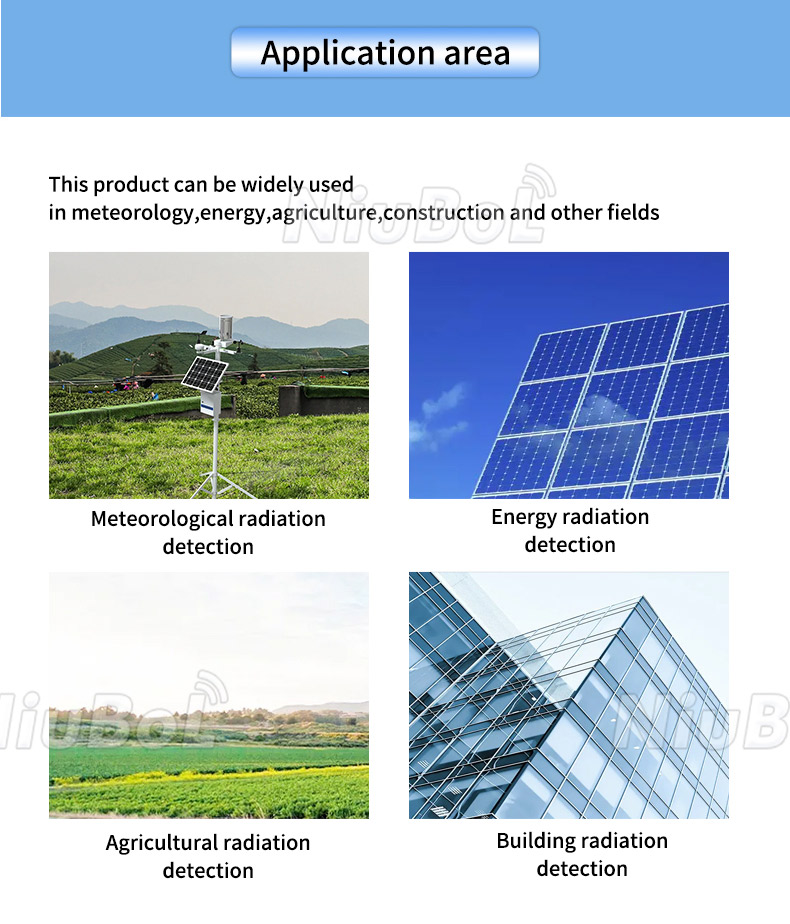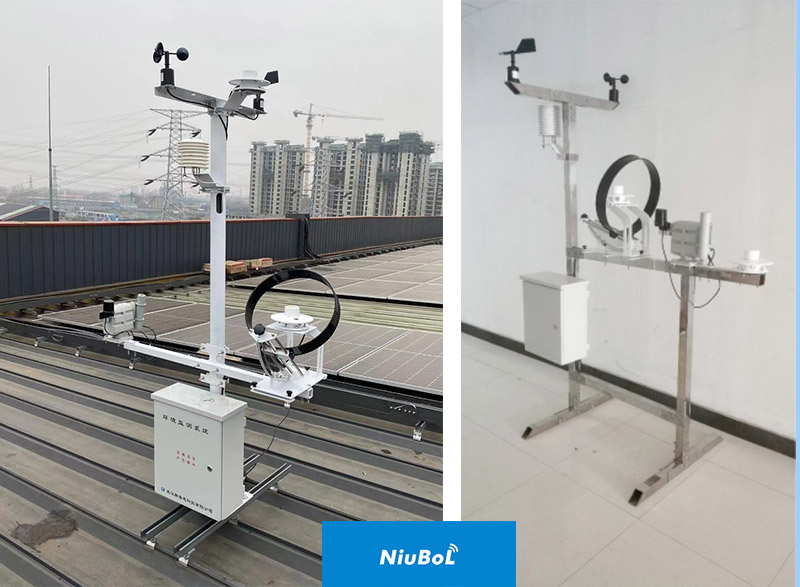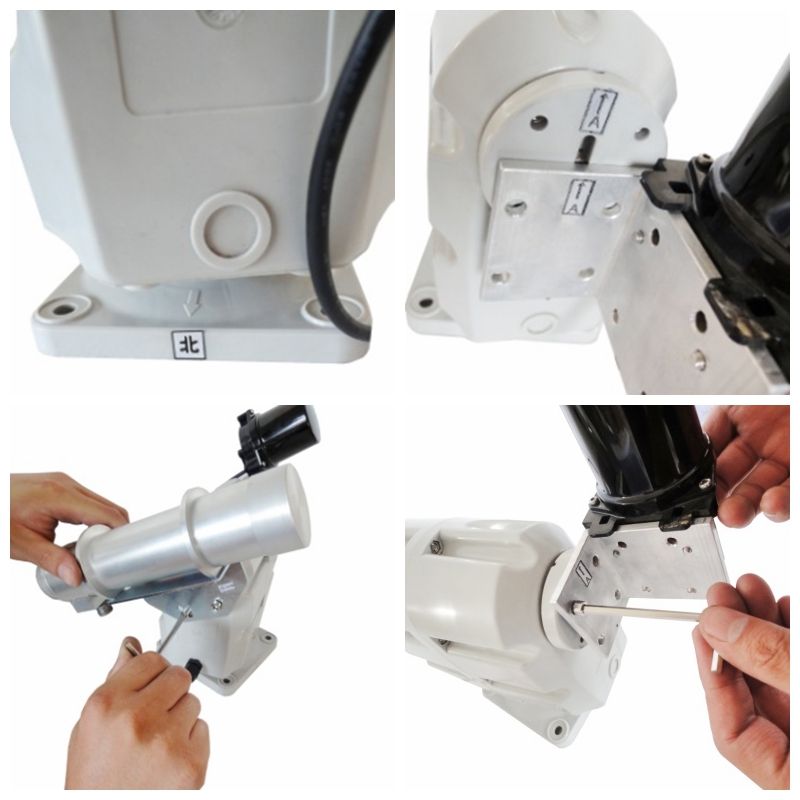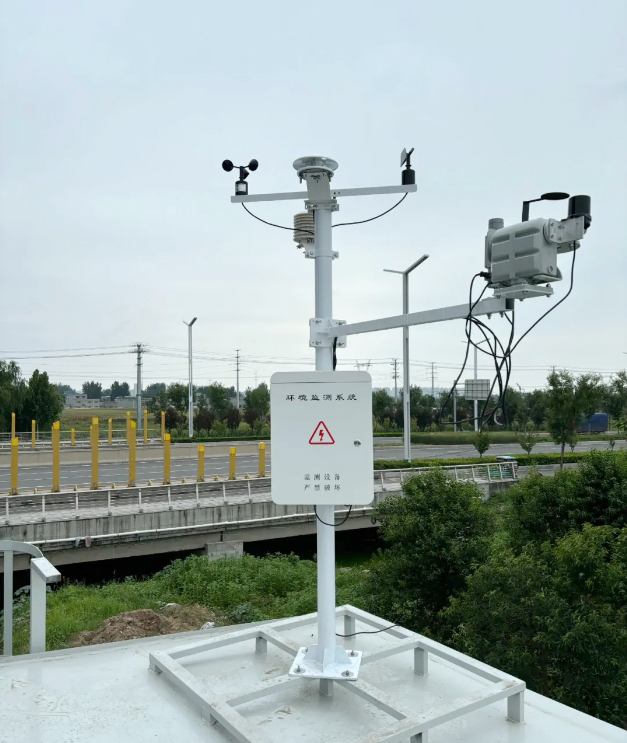

— Blogs —
—Products—
 Consumer hotline +8618073152920
Consumer hotline +8618073152920 WhatsApp:+8615367865107
Address:Room 102, District D, Houhu Industrial Park, Yuelu District, Changsha City, Hunan Province, China
Product knowledge
Time:2024-11-21 12:06:17 Popularity:212
A Pyrheliometer is a specialized meteorological instrument primarily used to measure the intensity of direct solar radiation. It can precisely determine the radiation intensity of sunlight that is vertically incident on the Earth's surface, making it an essential tool for assessing solar energy resources, studying climate change, and calibrating solar energy systems. The design of a Pyrheliometer is sophisticated, capable of accurately measuring the intensity of solar radiation even in extreme weather conditions. It has a wide working wavelength range, from 280 nm to 3000 nm, ensuring comprehensive monitoring of the solar spectrum.
- Weather Forecasting: Provides solar radiation data to help meteorologists predict weather changes more accurately.
- Climate Research: Monitors long-term changes in solar radiation, supporting studies on climate change.
- Solar System Design: Provides essential data for designing solar photovoltaic panels and solar water heaters.
- Performance Evaluation: Assesses the performance and efficiency of solar energy systems.
- Air Quality Monitoring: Solar radiation data can be used to evaluate atmospheric transparency and air quality.
- Ecosystem Research: Studies the impact of solar radiation on plant growth and ecosystems.
- Crop Management: Uses solar radiation data to optimize crop planting arrangements and irrigation systems, improving crop yield and quality.
- Energy Efficiency: Provides solar radiation data to help architects select appropriate materials and designs that reduce building energy consumption.
1. Weather Stations: Standard equipment used for continuous monitoring of solar radiation and providing meteorological data.
2. Solar Power Plants: Evaluates and optimizes the performance of solar power generation systems.
3. Research Institutions: Universities and research institutions conduct scientific research related to solar radiation.
4. Environmental Protection Agencies: Monitors the impact of atmospheric pollution on solar radiation and provides data support for environmental protection.
5. Agriculture: Used in agricultural experiments to monitor the effects of solar radiation on crop growth.
6. Building Assessments: Assists in evaluating building energy consumption and the potential for solar energy utilization.

The price of a Pyrheliometer varies depending on factors such as brand, model, precision, and additional features. Generally, high-precision, multifunctional Pyrheliometers are more expensive, while those with basic precision are more affordable. The approximate price range is as follows:
- Economy Model: Around $800 to $1,200
- Mid-range Model: Around $1,200 to $3,000
- High-end Model: Around 3,000 to 6,000USD
- Research-grade Model: Over 6,000USD

- Resolution: Choose a sensor with high resolution to ensure accurate measurement results.
- Stability: Consider the long-term stability of the sensor, especially when used outdoors.
- Range: Ensure the sensor's measurement range meets your needs, such as 0-2000 W/m².
- Temperature and Humidity: Ensure the sensor can operate in the expected working environment, such as a temperature range of -40°C to +80°C, and humidity range of 0% to 100% RH.
- Protection Rating: Choose a sensor with a high protection rating (e.g., IP65 or higher) suitable for outdoor or industrial environments.
- Output Form: Choose the appropriate output interface (e.g., RS485, 4-20mA, analog voltage output) based on your data acquisition and processing system.
- Wireless Communication: If remote monitoring is needed, choose a sensor that supports wireless communication (e.g., 4G/5G, Wi-Fi, LoRa).

- Power Consumption: Choose a low-power sensor, especially for battery-powered applications.
- Power Supply: Ensure the sensor’s power supply is compatible with your system, such as DC 12V, 24V, or other custom power supplies.
- Brand Reputation: Choose well-known brands and suppliers with good market reputation.
- Technical Support: Ensure the supplier offers good technical support and after-sales service, especially in case of issues.
- Calibration: Choose a model that is easy to calibrate and maintain. Consider whether the supplier provides regular calibration services.
- Replacement Parts: Understand the availability of replacement parts to ensure manageable maintenance costs over time.
- Output Format: Ensure the Pyrheliometer’s output format (e.g., digital signal, RS485) is compatible with your data acquisition system for easy integration and data analysis.
- International Standards: For some applications, such as meteorological observation, certain international standards may be required, such as ISO or WMO (World Meteorological Organization) recommended standards.
- User Reviews: Research the performance of different models in similar applications by looking at user reviews and case studies to help inform your decision.

Conclusion
The price of a Pyrheliometer varies due to several factors, ranging from $800 to over 6,000USD. When selecting one, it is important to consider precision, measurement range, brand, functionality, communication interface, power supply, budget, maintenance costs, and after-sales service. For users with a limited budget, an economical model may be suitable, while research institutions or meteorological stations requiring high-precision data should invest in higher-end equipment. We hope the information provided in this article helps you better understand and choose the right Pyrheliometer for your needs.
Related recommendations
Sensors & Weather Stations Catalog
Agriculture Sensors and Weather Stations Catalog-NiuBoL.pdf
Weather Stations Catalog-NiuBoL.pdf
Related products
 Combined air temperature and relative humidity sensor
Combined air temperature and relative humidity sensor Soil Moisture Temperature sensor for irrigation
Soil Moisture Temperature sensor for irrigation Soil pH sensor RS485 soil Testing instrument soil ph meter for agriculture
Soil pH sensor RS485 soil Testing instrument soil ph meter for agriculture Wind Speed sensor Output Modbus/RS485/Analog/0-5V/4-20mA
Wind Speed sensor Output Modbus/RS485/Analog/0-5V/4-20mA Tipping bucket rain gauge for weather monitoring auto rainfall sensor RS485/Outdoor/stainless steel
Tipping bucket rain gauge for weather monitoring auto rainfall sensor RS485/Outdoor/stainless steel Pyranometer Solar Radiation Sensor 4-20mA/RS485
Pyranometer Solar Radiation Sensor 4-20mA/RS485
Screenshot, WhatsApp to identify the QR code
WhatsApp number:+8615367865107
(Click on WhatsApp to copy and add friends)